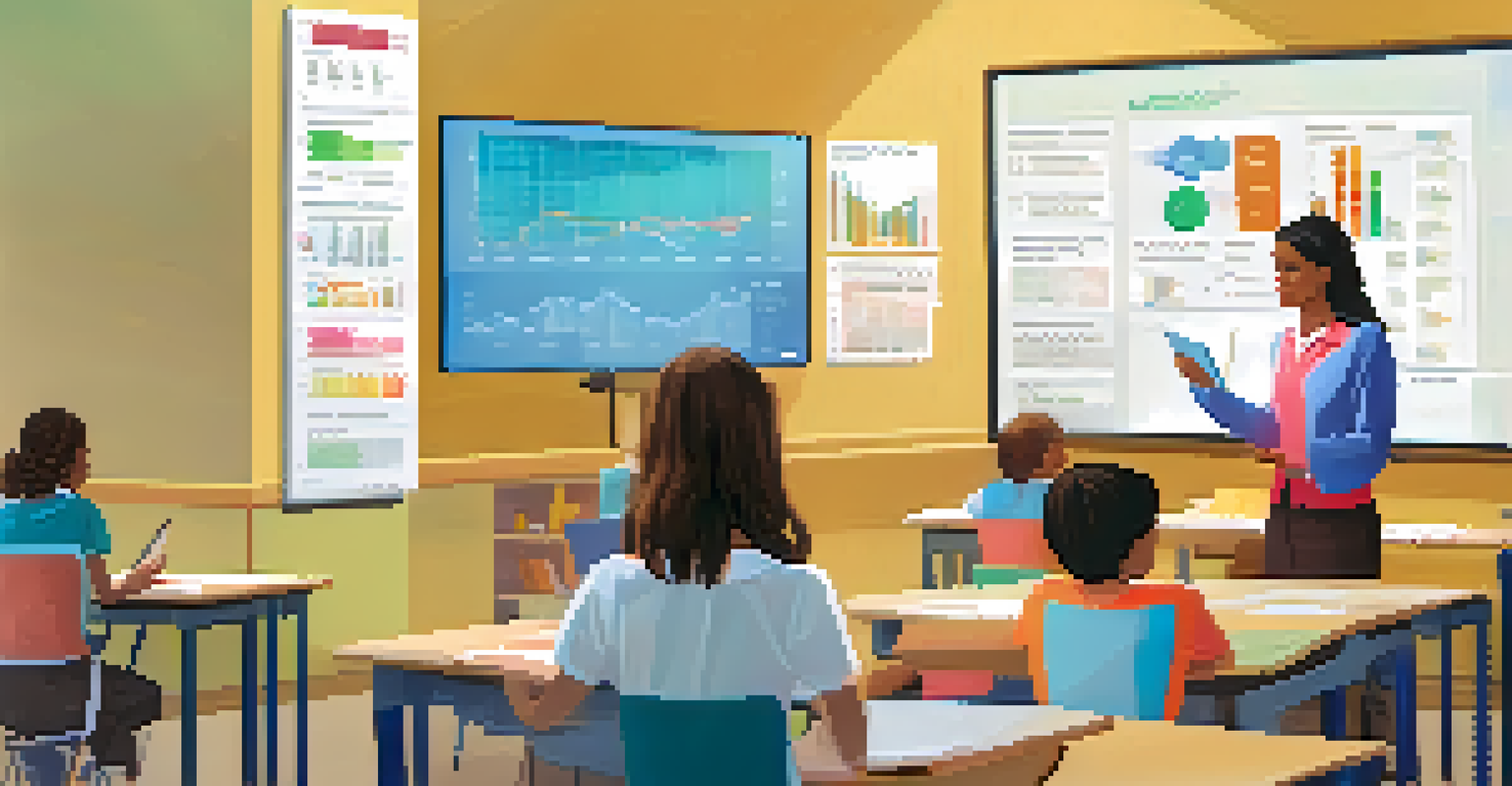Best Digital Assessment Tools for STEM Education Today

Understanding Digital Assessment in STEM Education
Digital assessment tools play a pivotal role in modern STEM education. They provide educators with insights into student understanding, allowing for tailored instruction. By integrating technology, these tools enhance engagement and provide immediate feedback, which is crucial for developing critical thinking skills.
Assessment is the engine that drives student learning.
Moreover, digital assessments can cater to various learning styles, making them more inclusive. For instance, visual learners may benefit from interactive simulations, while auditory learners can engage with podcasts or video explanations. This adaptability helps teachers address diverse classroom needs.
Ultimately, digital assessments are not just about testing; they are about fostering a growth mindset. When students receive timely and constructive feedback, they are more likely to embrace challenges and take ownership of their learning journey.
Benefits of Using Digital Assessment Tools
Digital assessment tools offer several advantages over traditional methods. They streamline the grading process, saving educators valuable time. Instant feedback mechanisms also empower students to learn from their mistakes without waiting days for results.

Additionally, these tools often include analytics features that help teachers track student progress over time. For example, a teacher can identify trends in a class’s understanding of specific concepts and adjust their teaching strategies accordingly. This data-driven approach enhances instructional effectiveness.
Digital Assessments Enhance Learning
Digital assessment tools provide immediate feedback and insights, fostering a growth mindset and catering to diverse learning styles.
Lastly, digital assessments can be more engaging than paper-based tests. Many platforms incorporate gamification elements, making the assessment process feel less daunting and more enjoyable for students. This increased engagement often leads to better learning outcomes.
Top Tool 1: Google Forms for Assessments
Google Forms is a versatile tool for creating quizzes and surveys, making it a favorite among educators. Its user-friendly interface allows teachers to design assessments quickly, with options for multiple-choice questions, short answers, and more. Plus, it integrates seamlessly with Google Classroom, simplifying the assignment process.
Feedback is the breakfast of champions.
One standout feature of Google Forms is its automatic grading capability. Teachers can set correct answers for multiple-choice questions, and students receive immediate feedback upon submission. This instant response not only saves time but also encourages students to reflect on their answers right away.
Furthermore, Google Forms offers robust data analytics. Educators can easily visualize student responses and identify areas where many struggle. This insight is invaluable for guiding future lessons and ensuring all students are given the support they need.
Top Tool 2: Kahoot! for Interactive Learning
Kahoot! is an interactive platform that turns assessments into fun games. Teachers can create quizzes that students can engage with in real-time, either in class or remotely. The competitive aspect of Kahoot! motivates students to participate actively and enhances retention of information.
The platform allows for various question types, including true/false and multiple-choice, catering to different learning preferences. Teachers can also incorporate images and videos into quizzes, making assessments more engaging and visually appealing. This multimedia approach helps to reinforce concepts effectively.
Engaging Tools Make Learning Fun
Platforms like Kahoot! and Quizizz gamify assessments, increasing student engagement and retention while promoting a stress-free environment.
Moreover, Kahoot! provides immediate feedback and data analytics after each quiz. Educators can see how each student performed, allowing for targeted interventions. This way, Kahoot! not only makes learning fun but also supports meaningful educational outcomes.
Top Tool 3: Nearpod for Interactive Lessons
Nearpod is a comprehensive platform that combines lesson delivery with formative assessments. Teachers can create interactive presentations that include quizzes, polls, and even virtual reality experiences. This multi-faceted approach keeps students engaged while checking their understanding in real-time.
One of Nearpod's unique features is its ability to allow students to learn at their own pace. Educators can assign lessons as homework, letting students revisit challenging concepts. This flexibility helps accommodate different learning speeds, ensuring that no one is left behind.
Additionally, Nearpod provides in-depth analytics for teachers. After lessons, educators can review student performance and engagement levels, adjusting future instruction as needed. This data-driven approach empowers teachers to make informed decisions in their classrooms.
Top Tool 4: Quizizz for Fun Assessments
Quizizz is another engaging tool that gamifies the assessment process. Teachers can create quizzes that students can complete at their own pace, either in class or at home. The fun, competitive element encourages students to participate and learn in a stress-free environment.
What sets Quizizz apart is its extensive library of existing quizzes on various subjects. Educators can easily customize these quizzes or create their own, making it a time-saving resource. Additionally, the platform allows for memes and images, adding an extra layer of enjoyment to the learning experience.
Data-Driven Instructional Changes
Tools such as Nearpod and Formative offer analytics that help teachers track student progress and adapt their teaching strategies for better outcomes.
After completing quizzes, students receive immediate feedback, enabling them to understand their mistakes. The platform also provides teachers with performance analytics, helping them identify areas of improvement for individual students or the class as a whole.
Top Tool 5: Edmodo for Classroom Collaboration
Edmodo is a social learning platform that fosters collaboration between students and teachers. It allows educators to create quizzes, polls, and assignments while facilitating discussions. This interactive environment encourages students to engage with one another and deepen their understanding of STEM concepts.
One of the key benefits of Edmodo is its focus on community building. Students can ask questions and share resources, promoting a collaborative learning atmosphere. This sense of community can significantly enhance motivation and accountability among learners.

Additionally, Edmodo offers various assessment options, including graded quizzes and informal polls. Teachers can track individual student progress and adjust their instructional strategies accordingly. By fostering collaboration and providing insightful analytics, Edmodo enhances the assessment process in STEM education.
Top Tool 6: Formative for Real-Time Feedback
Formative is an innovative tool designed specifically for real-time assessment. It allows educators to create assessments that students can complete during lessons, offering immediate feedback. This instant communication supports a dynamic learning environment where teachers can address misconceptions on the spot.
The platform includes features like live polling and interactive questions, making it easy for teachers to gauge student understanding. For example, educators can ask questions during a lesson and analyze responses in real-time, adjusting their teaching approach as needed. This adaptability is crucial in STEM education, where concepts can build on each other.
Moreover, Formative provides comprehensive analytics, tracking student progress over time. Teachers can identify patterns in performance and tailor their instruction to meet the needs of their students. By prioritizing real-time feedback and data, Formative enhances the overall learning experience.